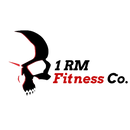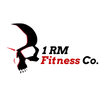The Pros of Using a Weightlifting Belt:
If you are a serious lifter who wants to take your training to the next level, you might have considered using a weightlifting belt. A weightlifting belt is a thick band of leather or other material that wraps around your waist and supports your core muscles during heavy lifts. But what are the benefits of using a weightlifting belt? And when should you use one? In this blog, I will explain the pros of using a weightlifting belt and how to use it properly.
1. It helps prevent injuries
The main aim of wearing a weightlifting belt is to protect your body from injuries while performing heavy lifts. A weightlifting belt reduces the stress on your lower back by increasing the intra-abdominal pressure (IAP), which is the pressure inside your abdominal cavity. This pressure acts like a balloon that pushes on your spine from the inside and supports it from the outside. This way, your spinal erector muscles, which are responsible for keeping your spine straight, do not have to work as hard and are less likely to get injured. A weightlifting belt also prevents back hyperextension, which is when your spine bends too far backward, by forming a rigid wall around your lower torso. This can help you avoid injuries such as herniated discs, muscle strains, and ligament sprains.
2. It engages and activates certain muscles
Another benefit of using a weightlifting belt is that it can help you engage and activate certain muscles that are important for lifting. A weightlifting belt can increase the muscle activity of your rectus abdominis, which is the main muscle of your abs. This muscle helps you stabilize your spine and transfer force from your lower body to your upper body. A weightlifting belt can also help you activate your glutes and hamstrings, which are the main muscles of your hips and legs. These muscles help you generate power and drive during lifts such as squats and deadlifts. By wearing a weightlifting belt, you can improve your core strength and leg strength, which can lead to better performance and more gains.
3. It improves your form and technique
A third benefit of using a weightlifting belt is that it can help you improve your form and technique while lifting. A weightlifting belt can reduce the amount of spinal flexion (forward bend), spinal extension (backward bend), and lateral flexion (side bend) of your spine while lifting. This means that you can maintain a more neutral and stable spine position, which is optimal for lifting safely and efficiently. A weightlifting belt can also help you focus on using your legs more than your back while lifting. This can help you avoid overexertion or hyperextension of your lower back, which can cause pain and injury. By wearing a weightlifting belt, you can learn to lift with proper form and technique, which can enhance your skill and confidence.
When to use a weightlifting belt
Now that you know the pros of using a weightlifting belt, you might be wondering when to use one. The general rule is that you should use a weightlifting belt when you are lifting heavy weights (around 80% or more of your one-rep max) or when you are doing high-intensity or high-volume training. You should also use a weightlifting belt when you are performing exercises that put a lot of stress on your lower back, such as squats, deadlifts, overhead presses, and cleans. You should not use a weightlifting belt when you are lifting light weights (below 60% of your one-rep max) or when you are doing low-intensity or low-volume training. You should also not use a weightlifting belt when you are performing exercises that do not require much core stability, such as bicep curls, tricep extensions, or lateral raises.
How to wear a weightlifting belt
Finally, let’s talk about how to wear a weightlifting belt correctly. There are different types of weightlifting belts available on the market, but the most common ones are powerlifting belts and bodybuilding/traditional belts. Powerlifting belts are the same width all around and are ideal for preventing back hyperextension and twisting. Bodybuilding/traditional belts are wider in the back and narrower in the front and are more comfortable and flexible for a variety of exercises. You can choose the type of belt that suits your preference and goals.
To wear a weightlifting belt properly, you should follow these steps:
- Position the belt around your waist, slightly above your hips and below your ribs. The belt should be snug but not too tight. You should be able to breathe normally and fit a finger between the belt and your body.
- Fasten the belt securely using the buckle or the Velcro. Make sure the belt does not slip or move during your lifts.
- Before each lift, take a deep breath into your belly and brace your core muscles. This will create more intra-abdominal pressure and make the belt more effective.
- Perform your lift with good form and technique. Keep your spine neutral and use your legs to drive the weight up.
- After each lift, exhale slowly and relax your core muscles. Do not hold your breath for too long or you might get dizzy or faint.
Conclusion
A weightlifting belt is a useful tool that can help you lift heavier, safer, and better. A weightlifting belt can prevent injuries, activate certain muscles, and improve your form and technique. However, a weightlifting belt is not a magic solution that will make you stronger overnight. You still need to train hard, smart, and consistently to achieve your goals. A weightlifting belt is also not a substitute for proper core training and stabilization. You still need to work on your core strength and endurance to support your spine and prevent injuries. A weightlifting belt is best used as an accessory that can enhance your performance and protect your health.
I hope you enjoyed this blog and learned something new. If you have any questions or comments, feel free to leave them below. And if you are interested in buying a high-quality weightlifting belt, check out our website for some great options. Happy lifting!


